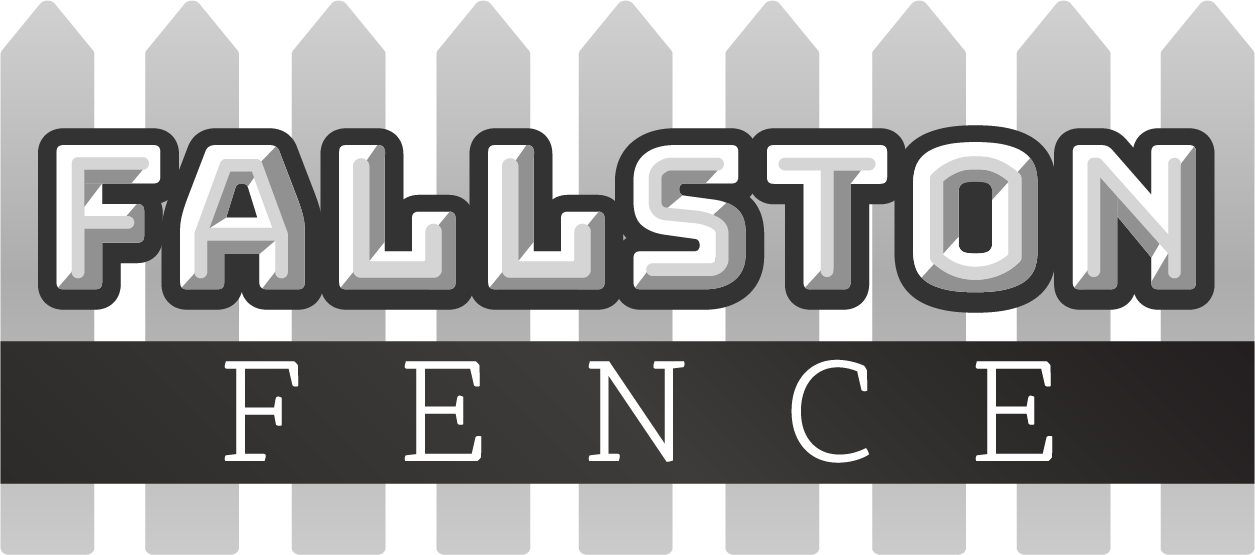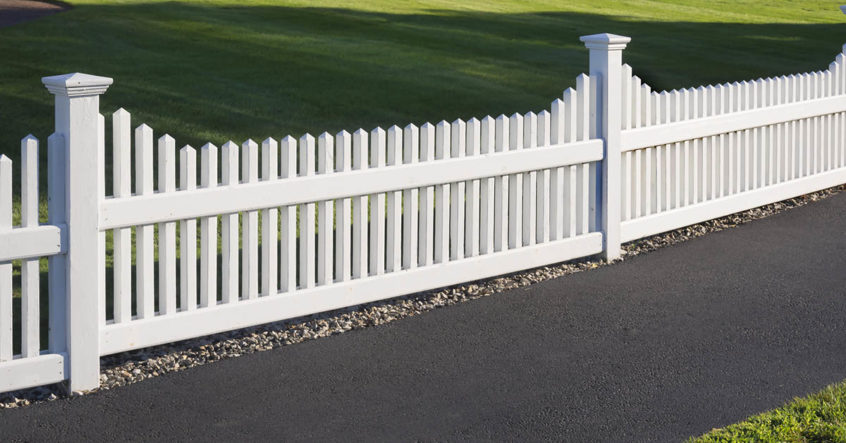There is no more iconic image than that of the beautiful home with a white picket fence. Low enough to reveal the home’s charm but high enough to keep small children and dogs in the yard, the white picket fence is vital to the Rockwellian image of America. What no one ever talks about is the maintenance involved with keeping that white picket fence looking as good as the day it was installed. A coat of paint every other year, a pressure wash in the spring, periodically replacing a picket because your child ran into it with their bike… there comes the point when the white picket fence takes on a life of its own, becoming a cruel taskmaster.
What if there was another way to have the iconic image without all of the work? Enter the…
White Vinyl Picket Fence
White vinyl fences are quickly becoming one of the most popular forms of yard privacy and security in the country. Low maintenance and easy to install, white vinyl privacy fencing extends as far as the eye can see in many suburban neighborhoods. What most homeowners don’t realize is vinyl fencing doesn’t have to be installed in panels, and it doesn’t have to be white.
What No One Told You About White Picket Fences
50 years ago when the white picket fence became the icon of the American dream, pickets were exclusively constructed of locally sourced wood. Over time, cedar and pressure treated pine became the standard wood types for picket fences due to their durability and insect- and rot-resistance. Once the pickets were installed, they were then whitewashed or painted white as a sign of prosperity. (After all, if you had time and money to paint a fence, you were doing well for yourself.) What no one talked about was the maintenance involved with keeping such a fence upright and white. Each year, homeowners would spend several days in the spring painting both sides of the white picket fence, repairing any broken pickets, and planting garden beds. Tired of devoting so much time and energy to home maintenance (and because they came to be a symbol of “keeping up with the Joneses”) the white picket fence fell out of style in the 1980’s. But the iconic image of suburban perfection remained.
The Vinyl Advantage
With more and more demands on your time, you don’t need to add “fence maintenance” to that list. That is why vinyl fencing has become so popular in recent years. Made from PVC materials, vinyl fencing is durable and only needs to be cleaned with a regular garden hose and a soapy sponge once a year. It is also less expensive to manufacture and install than ornamental metal fencing making it a cost-effective option for homeowners. Best of all, it can be manufactured in a variety of colors and styles, not just in the white panels that have been traditionally associated with vinyl fences.
Pickets, Posts & Rails
Before you can discuss the difference between types of pickets, it’s important to define some commonly used fencing terms.
- Pickets – By definition, a picket is a slat that is attached to a rail to form a fence. In traditional picket fences, the pickets themselves were pointed at the top to form a zig-zag pattern at the upper border of the fence. In white vinyl picket fences, pickets can take any number of shapes. Wide or narrow, flat or pointed at the top, the size and shape of your picket fence is entirely up to you.
- Posts – Posts are the periodic larger pieces that give a fence stability. When installing a white vinyl picket fence, posts are typically sunk into or attached to concrete to reinforce the fence. White posts are traditionally square, the posts in a white vinyl picket fence can be any color or size, depending on personal design preference, the height of your fence, and how the pickets are spaced. They can also have decorative tops to them to add dimension to your fence.
- Rails – Once the posts have been raised, horizontal rails are mounted between the posts to give pickets a place to attach. Rails are a necessary structural component of a white vinyl picket fence, but they do not necessarily need to be seen. How and where the rails are attached to the pickets depends on whether you want a contemporary squared off look or a more traditional aesthetic. Of course, rails can be installed on their own to form a fence, but you would not have the picket fence aesthetic that is so classically American.
Once you have selected the types of materials you want to use in your fence, you will need to make decisions about picket spacing. How close or far your pickets are spaced depends on the functionality of your fence. If you simply want the iconic look without the maintenance of a wood fence, spacing your pickets further apart may be right for you. If you want the iconic look while keeping children and small animals in a yard, closer picket spacing is necessary. Talk to your installation professional about the spacing that is right for your home, yard, and needs.
Rather than resorting to the traditional white picket fence and all of the maintenance that goes along with it, consider a white vinyl picket fence. Not only can you protect dogs and small children from wandering in the street, but you can also do so without impeding the view of your home and its gardens. Call Fallston Fence for a free white vinyl picket fence estimate today.

